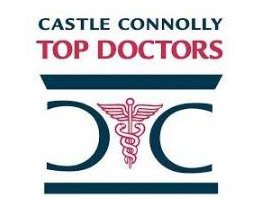Compression Fractures
The bones or vertebrae of the spinal column can sometimes fracture owing to trauma or a disease condition that causes the bone to break. Compression fractures can cause a collapse of the vertebrae. On a side-view X-ray, a compression fracture usually looks like a wedge-shaped vertebra.
Causes of compression fractures
There are three main causes for compression fractures:
- Osteoporosis, which weakens the bone and then allows normal stress to cause it to collapse.
- An injury, particularly a fall or other “vertical trauma.”
- Tumors.
What you should know about compression fractures
- The most common cause of compression fractures is osteoporosis.
- Osteoporosis-related compression fractures usually occur in the lower back.
- Compression fractures may or may not cause pain.
- Sometimes multiple fractures occur. This can lead to curvature of the spine (kyphosis).
- If a compression fracture occurs suddenly, it is typically felt in the lower part of the spine but may also be experienced in the front with severe stabbing pain.
- Most compression fractures occur in the elderly.
- Most compression fractures do not injure the spinal cord.
- There are new minimally invasive surgical techniques to help treat the most challenging cases of compression fractures.
Symptoms of compression fractures
Osteoporosis-related compression fractures typically occur gradually and may start out with little or no pain. Pain increases gradually over time.
Those who suddenly experience a compression fracture are more likely to experience severe pain.
In general, symptoms of any compression fracture include:
- Back pain that does not go away
- Loss of height
- Stooped posture
- Numbness or tingling in the legs or back
- Weakness
- Problems walking
- Loss of bowel or bladder control
Diagnosis
Getting an accurate diagnosis of your back condition is the first step to finding relief. University Spine Center can assist you in getting an accurate diagnosis. Your diagnosis will be made on the basis of a physical examination and medical history and may also include:
- X-rays
- Bone density scan (if osteoporosis is suspected)
- CT scan or MRI scan
Treatment
Once a compression fracture has occurred, it cannot be reversed. However, there are many new techniques to treat compression fractures.
In some cases, pain management (usually by medication), bracing, rest and physical therapy may be all that is required. Some patients are advised to exercise so that they can build up the muscles that support the back. If osteoporosis or a tumor is involved, the underlying condition must be treated. A brace may be recommended, at least temporarily.
Surgery is not required for all cases of compression fracture, but it may be necessary in some cases. The experts at University Spine Center can help you understand the most suitable options for you. There are two minimally invasive spinal surgery techniques used for compression fractures:
- Balloon kyphoplasty, which helps build up the fractured vertebra and usually requires general anesthesia. This is done for more complex fractures.
- Vertebroplasty, another procedure to build up the fractured vertebra, which is usually performed under local anesthesia and sedation, and generally is for simpler fracture types.





